Laser-Carved Legacy: Exploring the Scientific Construction and Cultural Significance of the World’s Largest Golden Buddha in Thailand Through a Tourist Perspective
Abstract
1. Introduction
1.1. Research Problem and Gap
1.2. Objectives
1.3. Contribution
2. Literature Review
2.1. History of the World’s Largest Carved Golden Buddha
2.2. Variables for Tourist Perception
- (1)
- Destination Identity
- (2)
- Heritage Value
- (3)
- Acquaintance Experience
- (4)
- Remarkable
- (5)
- Affection
2.3. Historical Foundations of Khao Chi Chan’s Heritage Identity
2.4. DHARMA Model
3. Materials and Methods
3.1. Methods of Scientific Construction the World’s Largest Golden Buddha
3.1.1. Buddha Auspicious Beginning and Project Initiation
3.1.2. Geological Context and Cliff Preparation
3.1.3. Laser Drawing and Painting Process
3.1.4. Carving and Gold Mosaic Application
3.2. Quantitative Metholology
4. Results
4.1. The World’s Largest Golden Buddha in Thailand
4.2. The World’s Largest Golden Buddha in Thailand—Tourist Perception
- (1)
- Structural Equation Model
- (2)
- Model Fit Indices Assessment
- (3)
- Hypothesis Testing Results
5. Discussion
5.1. Discussion of the Results
5.2. Implications
5.2.1. Implications of Laser Technology and DHARMA Model for Cultural Tourism Management
5.2.2. Practical Implications for Stakeholders
5.3. Limitations and Future Research
5.3.1. Limitation of This Study
5.3.2. Future Research
6. Conclusions
Author Contributions
Funding
Institutional Review Board Statement
Informed Consent Statement
Data Availability Statement
Acknowledgments
Conflicts of Interest
Appendix A. Methods of Scientific Construction the World’s Largest Golden Buddha
- (1)
- Auspicious beginning the project
- (2)
- Geology of the original cliff
- (3)
- Cliff smoothing

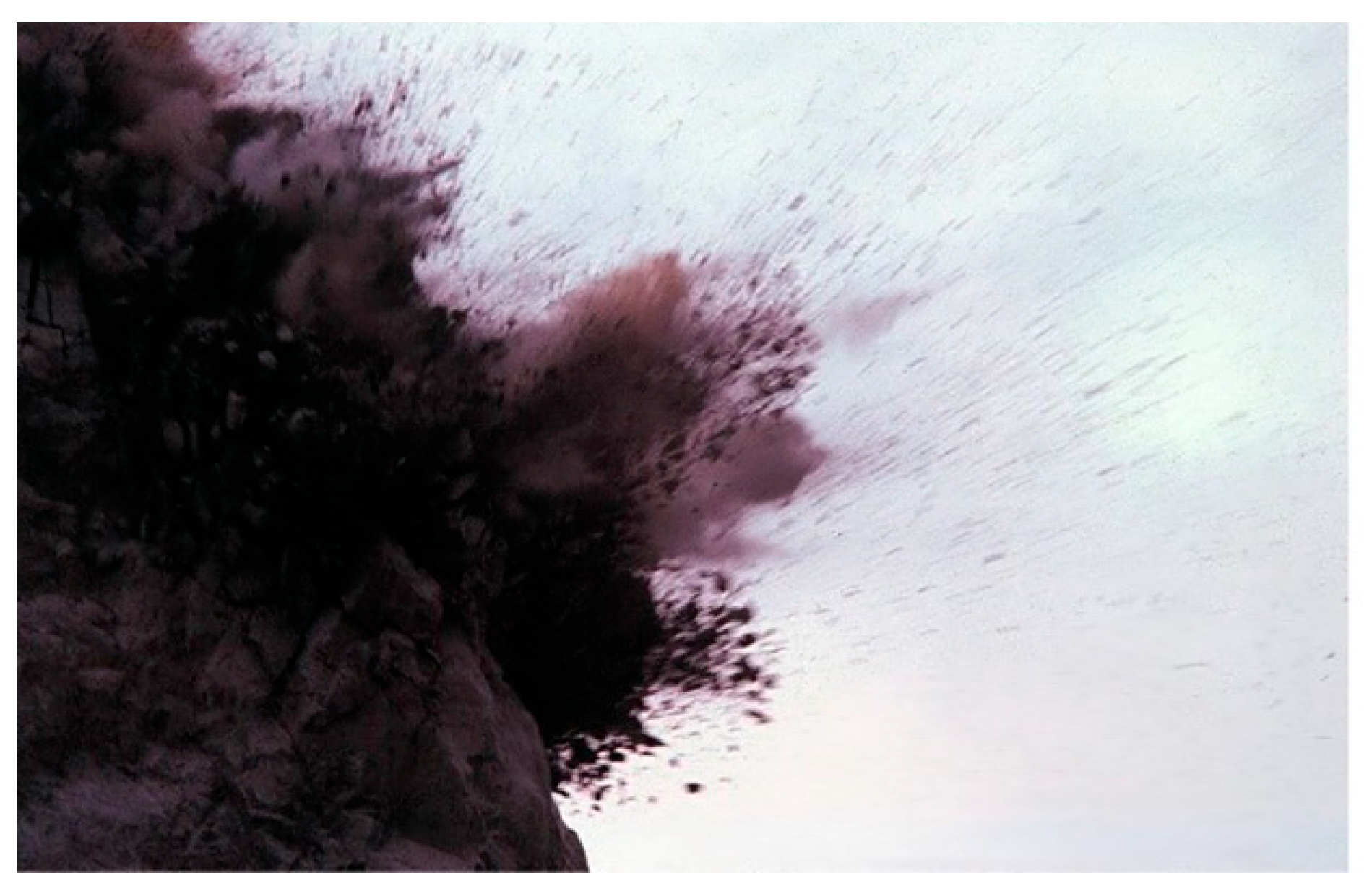


- (4)
- Equipment used for drawing the image of Buddha
- (5)
- Installation of laser
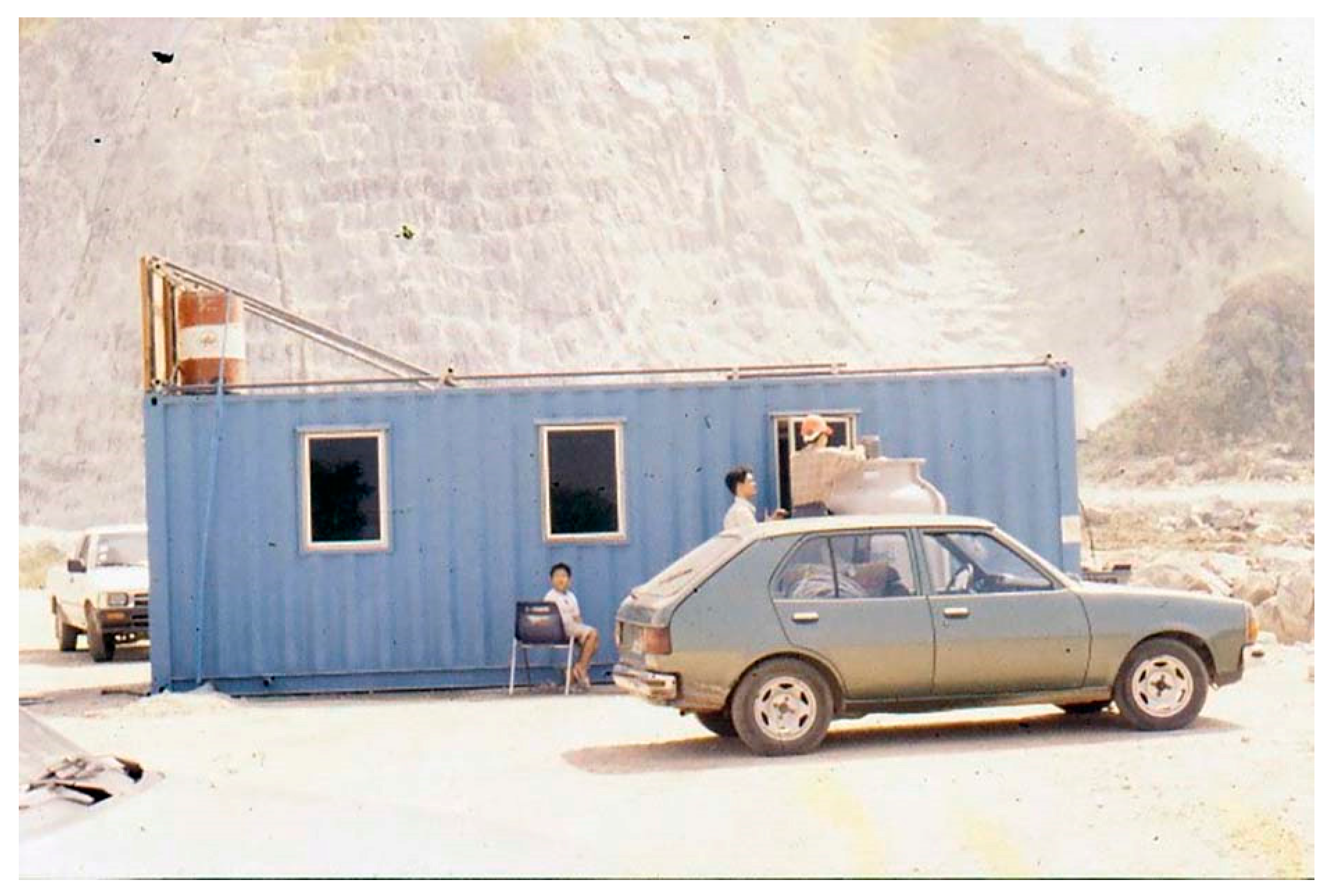
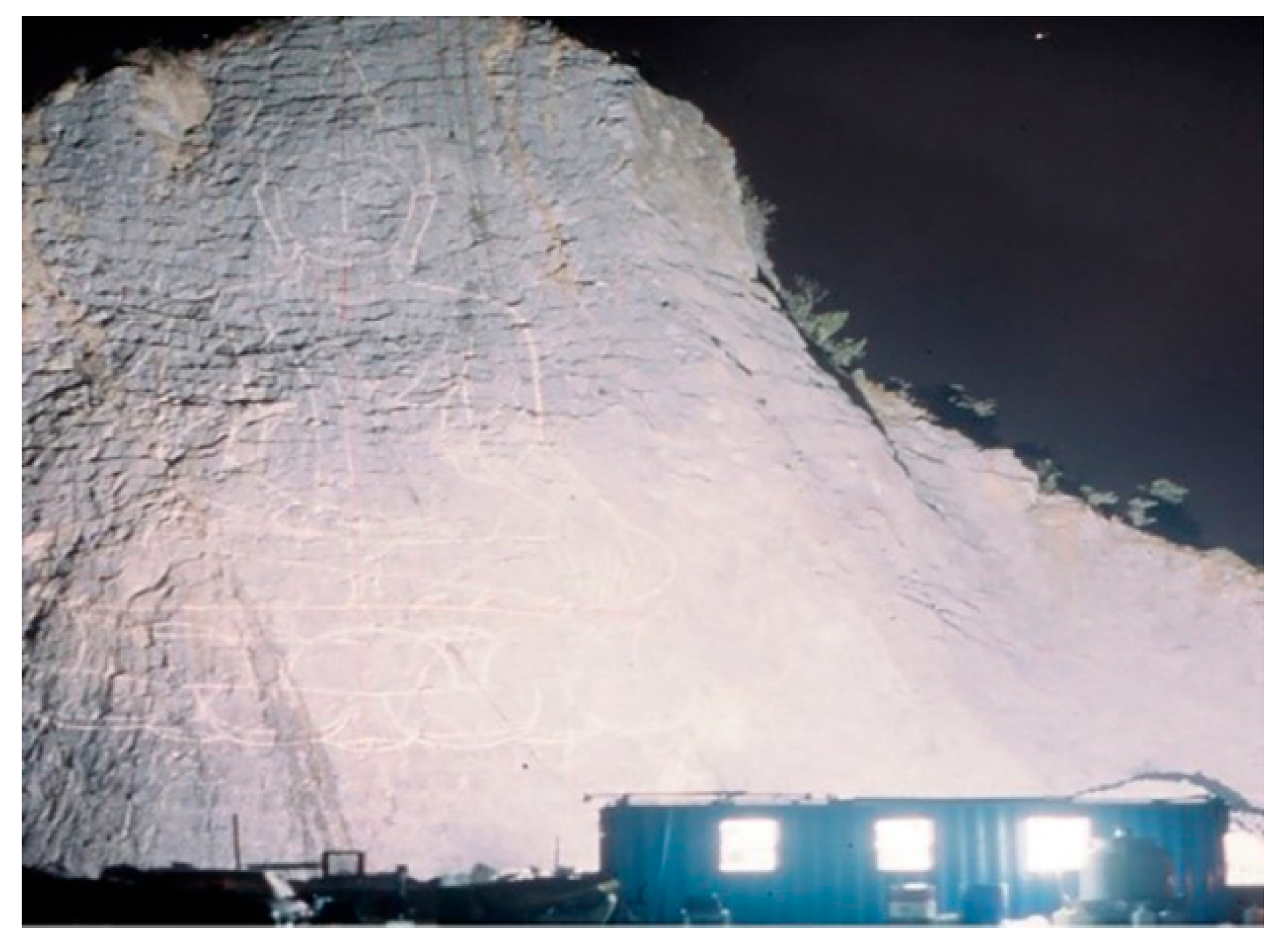
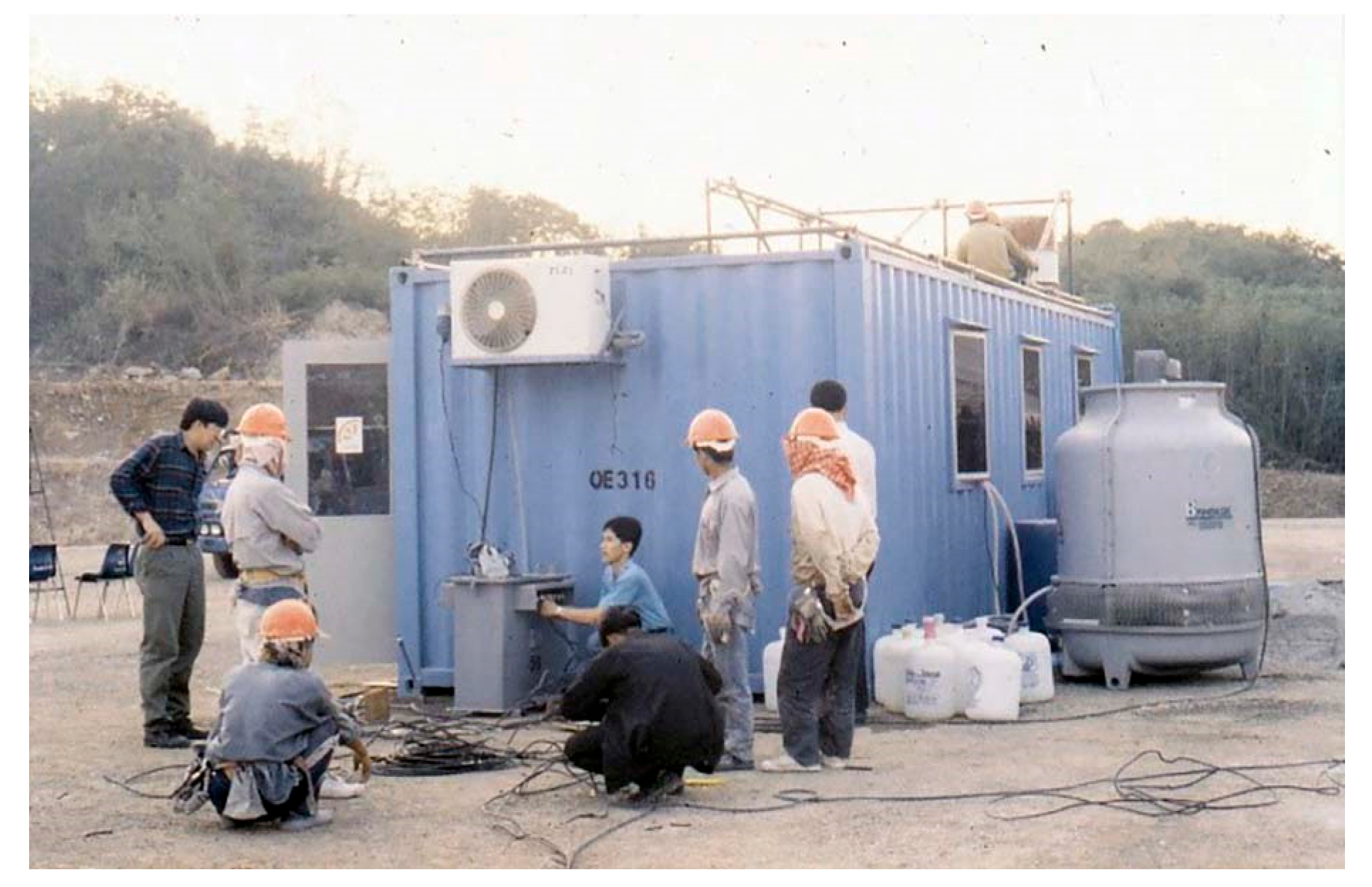
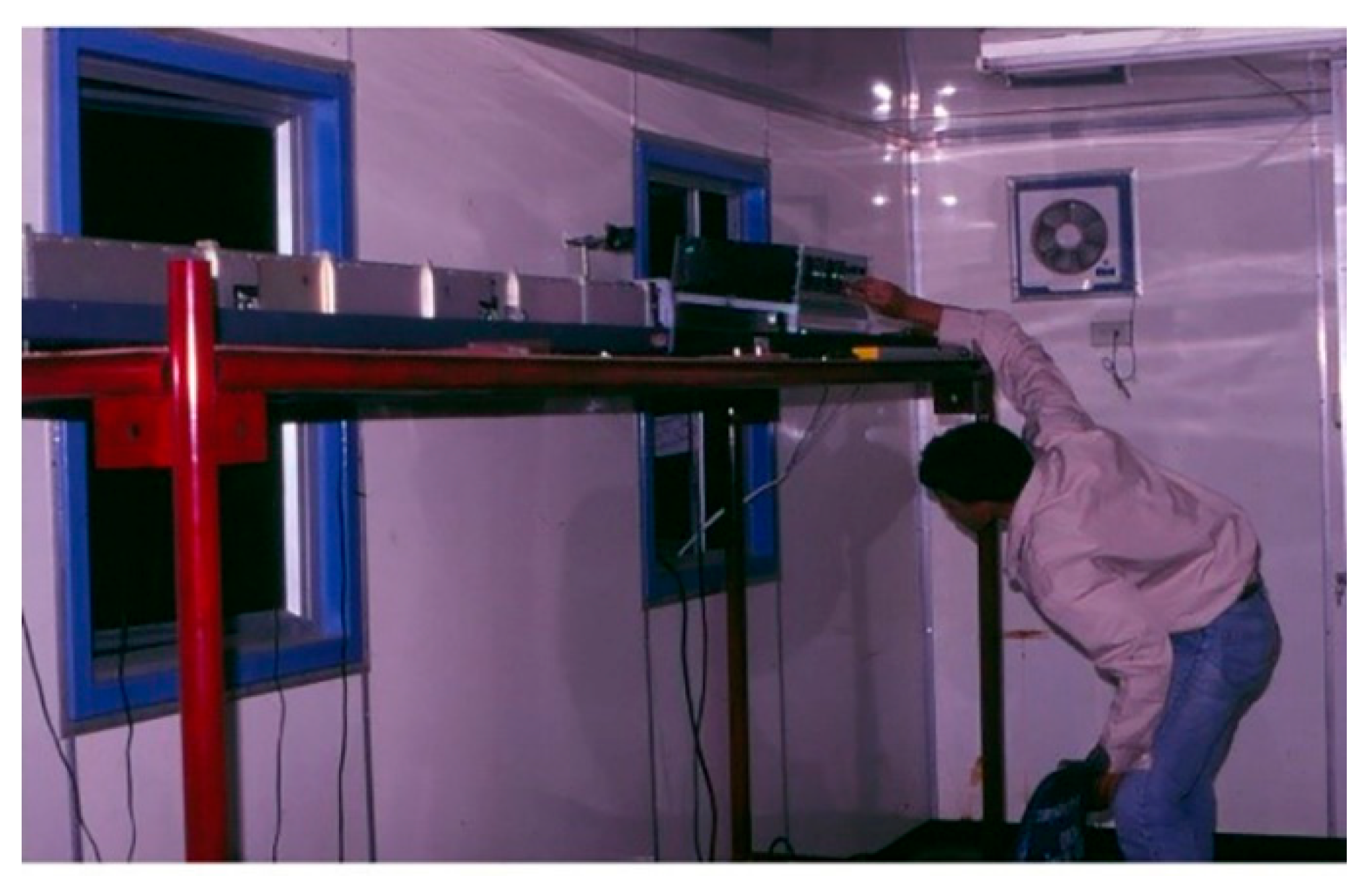
- (6)
- Principles of laser drawing
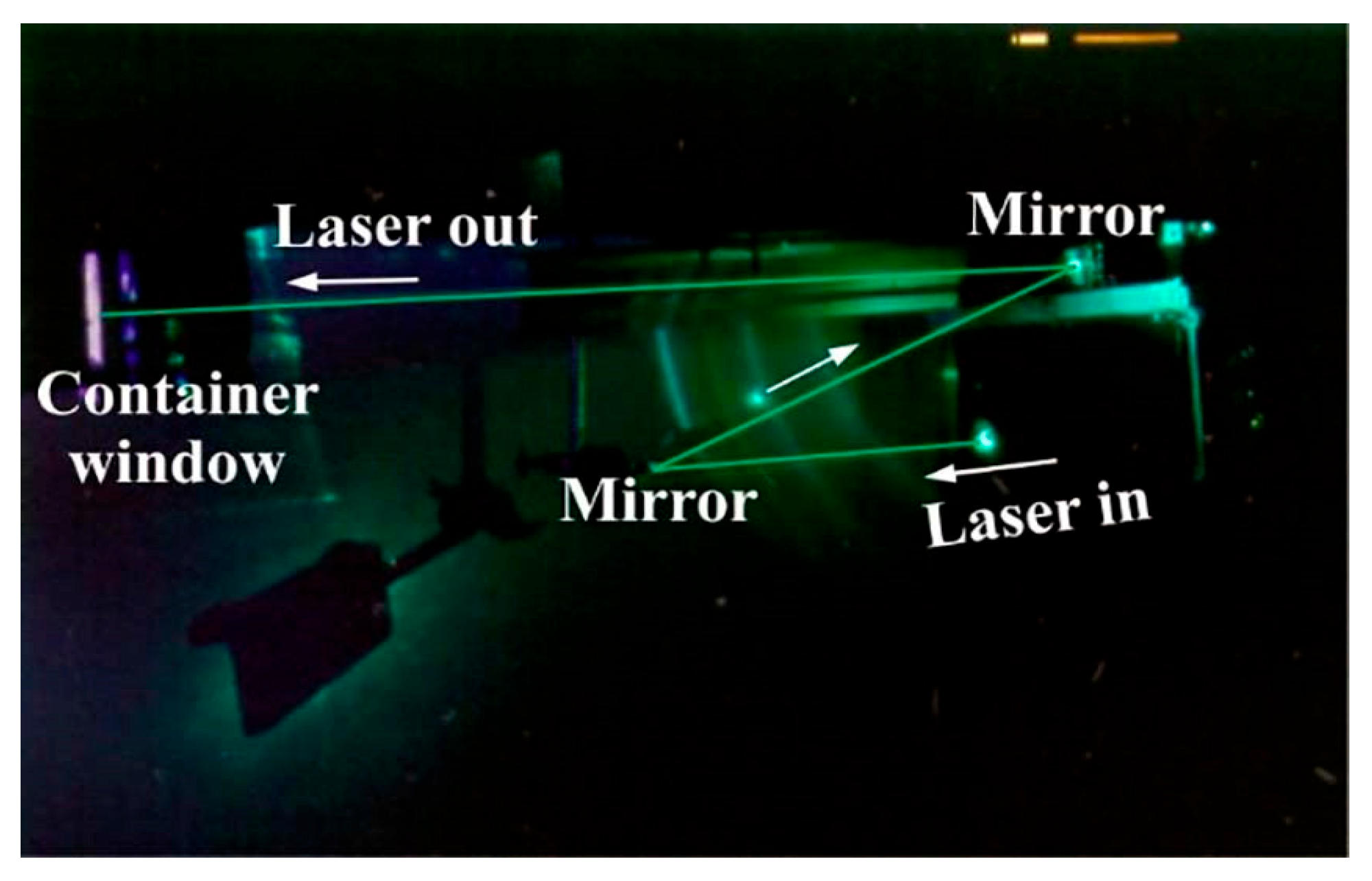
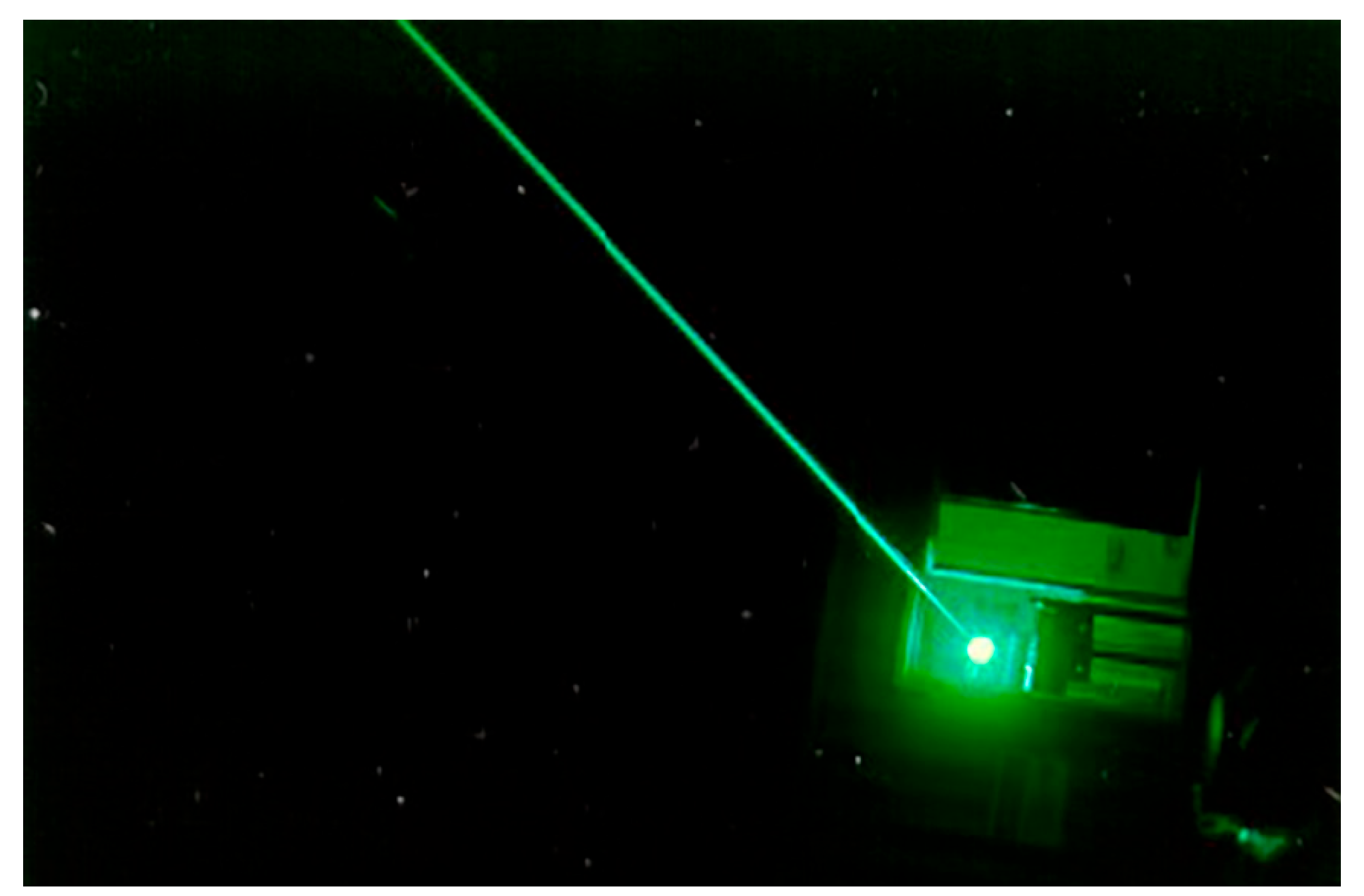
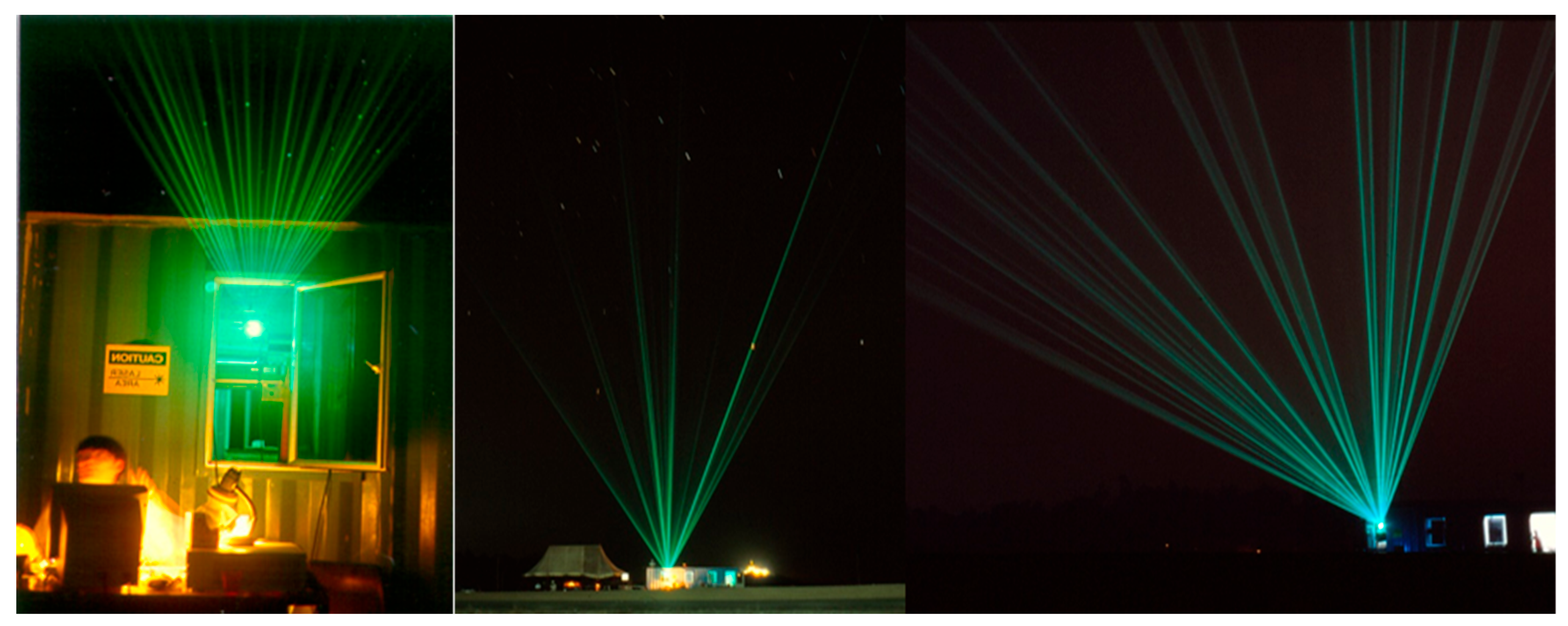
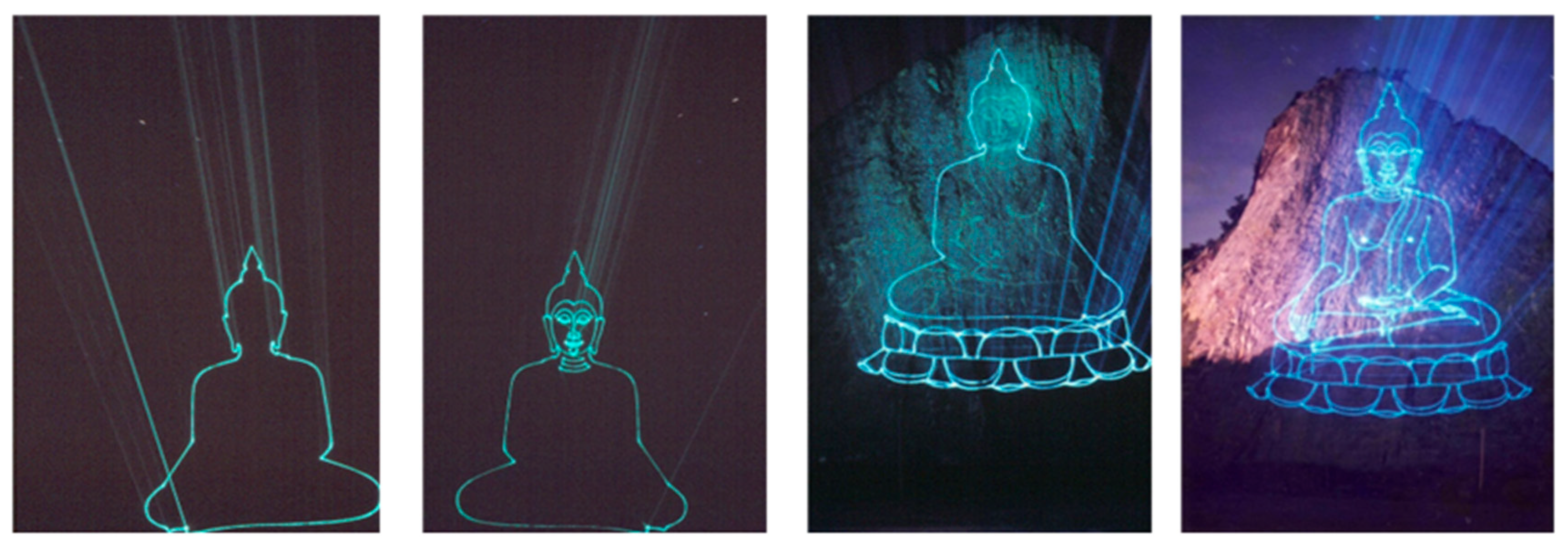
- (7)
- Painting along the laser lines

- (8)
- Carving the image of Buddha
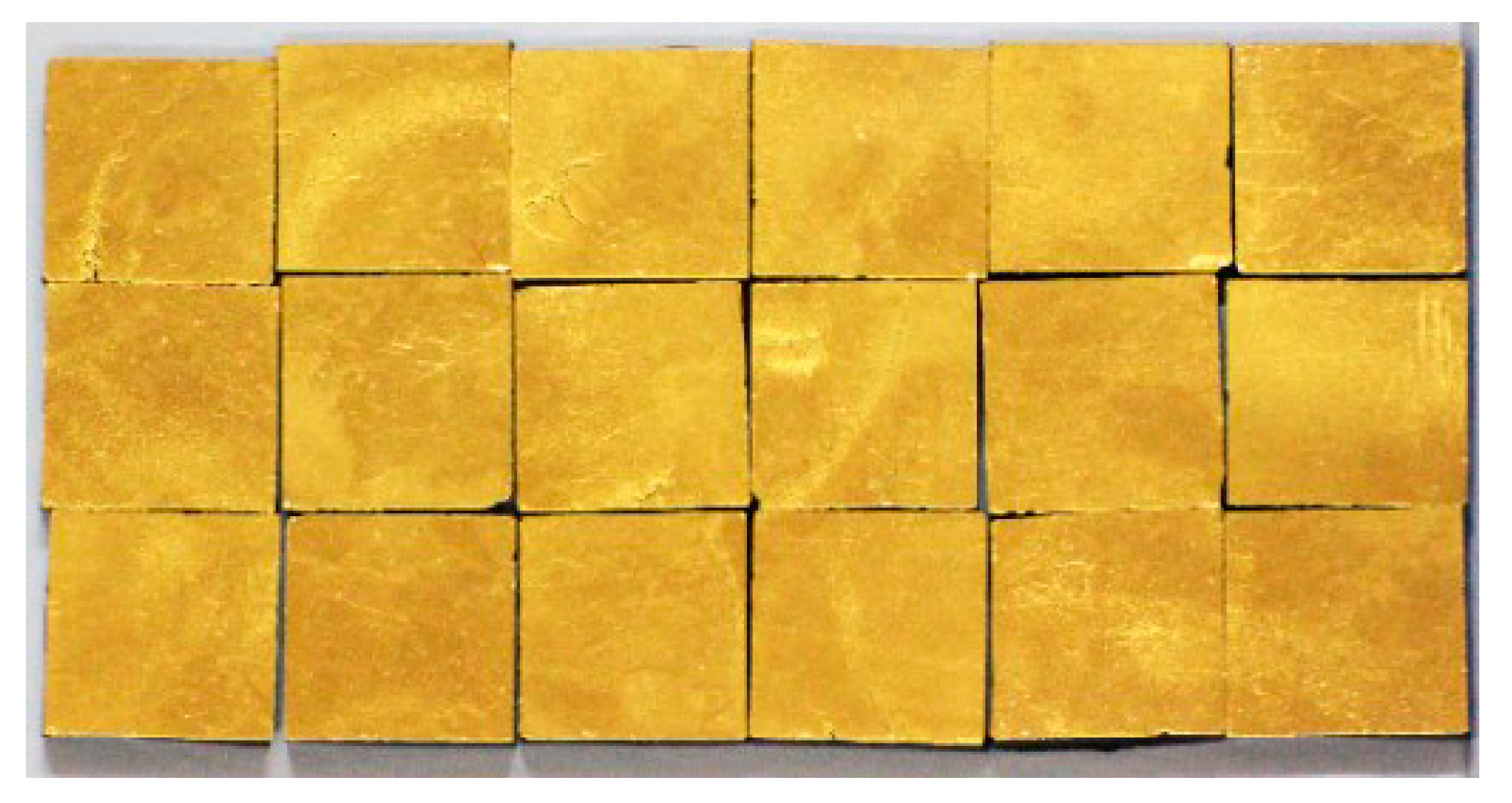
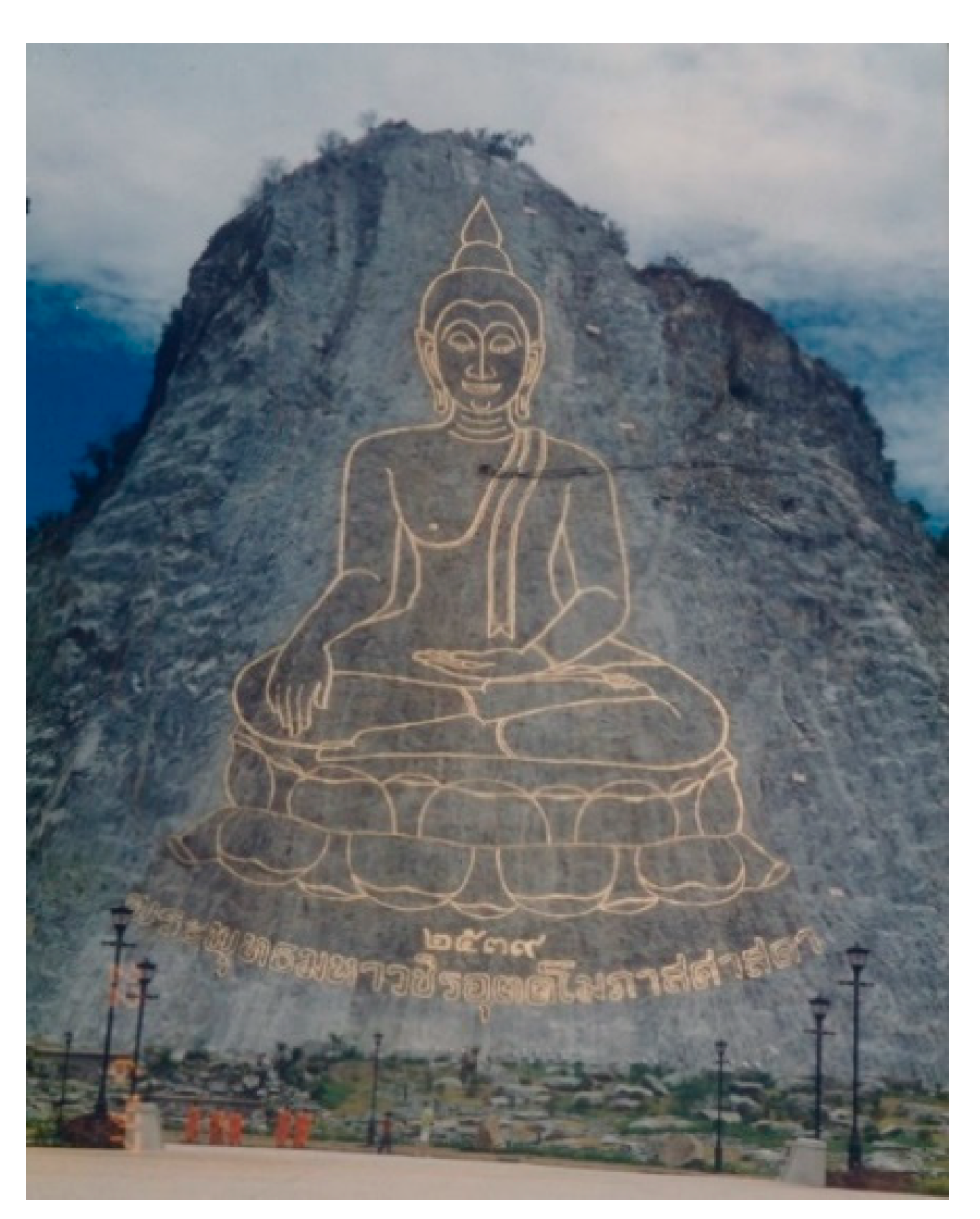
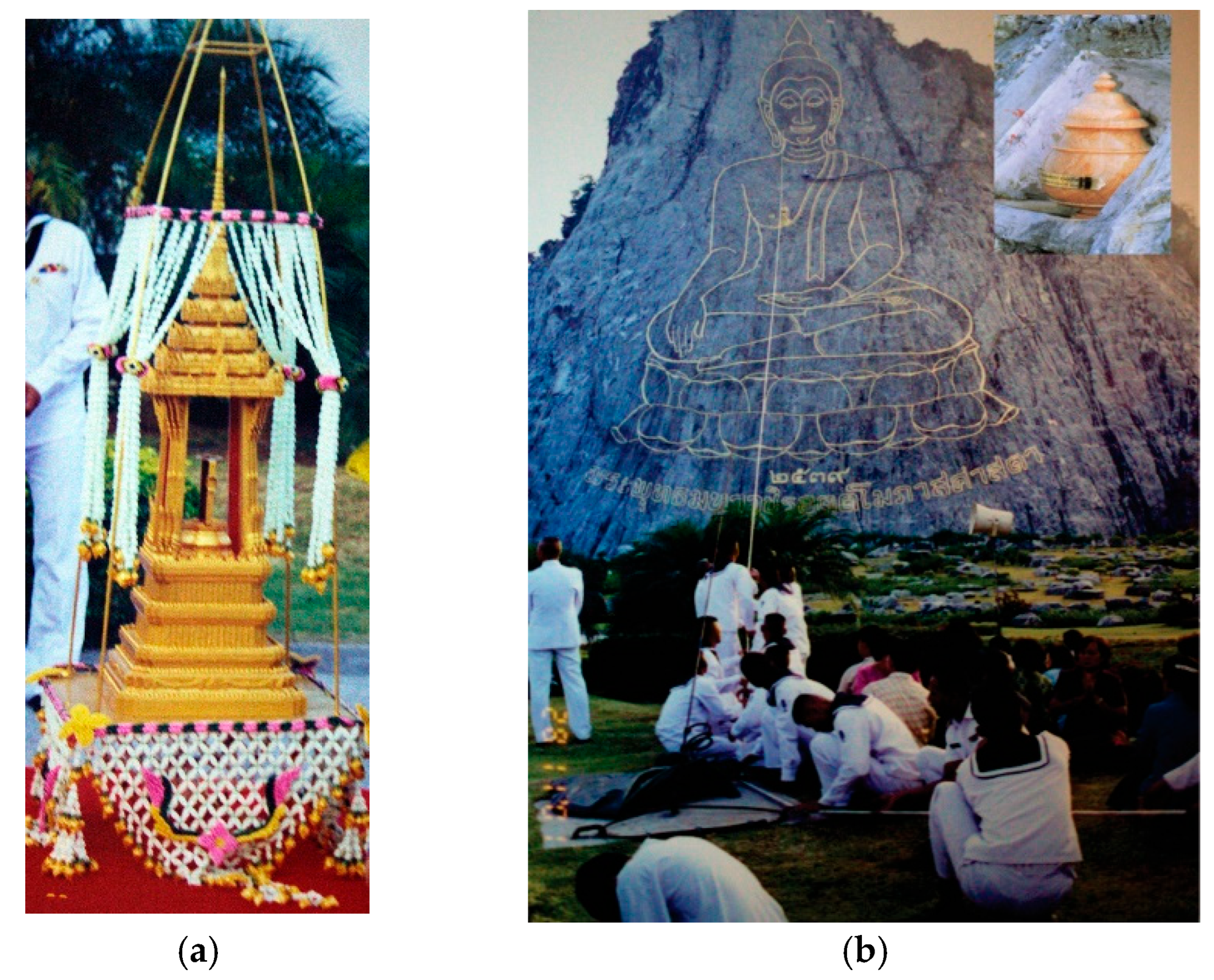
Appendix B
| Variable | Description |
|---|---|
| Des1 | Historical Context |
| Des2 | Religious Identity |
| Des3 | Cultural Identity |
| Des4 | Geographical Features |
| Her1 | Religious Value |
| Her2 | Cultural Value |
| Her3 | Historical value |
| Her4 | Conservation value |
| Her5 | Social value |
| Acq1 | Tourism experience |
| Acq2 | Onsite experience |
| Acq3 | Cultural experience |
| Acq4 | Social experience |
| Rem1 | Natural Beauty |
| Rem2 | Cultural Experience |
| Rem3 | Symbolism of the Location |
| Rem4 | Engaging Activities |
| Mem1 | Impression |
| Mem2 | Engagement |
| Mem3 | Conservation value |
| Mem4 | Emotional connection |
References
- Bhandari, H. (2022). Religious tourism and visitor perception: A case study analysis. ECS Transactions, 107(1), 6335–6342. [Google Scholar] [CrossRef]
- Brown, A., & Lee, M. (2021). Laser applications in modern medicine: A review. Journal of Medical Technology, 15(3), 78–89. [Google Scholar]
- Buhalis, D. (2000). Marketing the competitive destination of the future. Tourism Management, 21(1), 97–116. [Google Scholar] [CrossRef]
- Chaiyatorn, S., & Somsak, P. (2023). Sustainable tourism and cultural heritage in Thailand: Challenges and opportunities. Journal of Southeast Asian Studies, 28(3), 45–60. [Google Scholar]
- Cochran, W. G. (1997). Sampling techniques (3rd ed.). John Wiley & Sons. [Google Scholar]
- Division of Architecture, Department of Public Works. (1995). Project to construct a carved Buddha image on the cliff of Khao Chi Chan, Phra Phuttha Maha Wachira Uttamophat Sassada, Wat Yan Sangwararam, Bang Lamung district, Chonburi province, Thailand. Division of Architecture, Department of Public Works. (In Thai) [Google Scholar]
- Division of Geology, Department of Mineral Resources. (1991). Report on the survey of rock fractures in the cliff area of Khao Chi Chan, Sattahip district, Chonburi province, Thailand. Division of Geology, Department of Mineral Resources. (In Thai) [Google Scholar]
- Feng, Y., Qin, J., Lv, X., Tian, Y., & Meng, W. (2024). Exploring the influence of historical storytelling on cultural heritage tourists’ revisit intention: A case study of the Mogao Grottoes in Dunhuang. PLoS ONE, 19(9), e0307869. [Google Scholar] [CrossRef]
- Gao, J., & Liu, H. (2024). Emotional impacts of cultural tourism: A case study approach. Journal of Tourism Studies, 45(3), 123–135. [Google Scholar]
- Hair, J. F., Jr., Black, W. C., Babin, B. J., & Anderson, R. F. (2010). Multivariate data analysis: A global perspective (7th ed.). Pearson Prentice Hall. [Google Scholar]
- Hall, C. M. (2005). Tourism: Rethinking the social science of mobility. Pearson Education. [Google Scholar]
- Higham, T., Weiss, A. D., Higham, C., Ramsey, C. B., Guedes, J. d. A., Hanson, S., Weber, S. A., Rispoli, F., Ciarla, R., Pryce, T. O., & Pigott, V. C. (2020). A prehistoric copper-production centre in central Thailand: Its dating and wider implications. Antiquity, 94(376), 948–965. [Google Scholar] [CrossRef]
- Iftikhar, A., Haider, W. A., & Ullah, M. S. (2023). Sacred seduction: Unveiling the allure of religious activities as a tourist magnet. The Islamic Culture As-Saqafat-ul Islamia الثقافة الإسلامية—Research Journal—Sheikh Zayed Islamic Centre University of Karachi, 48. [Google Scholar] [CrossRef]
- International Blaster Co., Ltd. (1995). The project for carving the Buddha image on the cliff of Khao Chi Chan. International Blaster Co., Ltd. (In Thai) [Google Scholar]
- Johnson, L. (2021). Reimagining tourism: Cultural and spiritual dimensions in Southeast Asia. Asian Tourism Review, 8(2), 33–49. [Google Scholar]
- Kontogeorgopoulos, N., Churyen, A., & Duangsaeng, V. (2015). Homestay tourism and the commercialization of the rural home in Thailand. Asia Pacific Journal of Tourism Research, 20(1), 29–50. Available online: https://www.researchgate.net/publication/317007300_Tourism_in_Thailand_Growth_Diversification_and_Political_Upheaval (accessed on 13 August 2025). [CrossRef]
- Kumar, R., & Patel, S. (2022). Lasers in scientific research: Emerging trends. Physics Today, 75(6), 45–52. [Google Scholar]
- Kushwaha, S. K. (2024). Exploring the impact of Buddhist tourism and pilgrimage on cultural exchange and understanding: An empirical analysis. International Journal For Multidisciplinary Research, 6(2), 1–7. [Google Scholar] [CrossRef]
- Lee, S., & Kim, Y. (2022). The role of engaging activities in enhancing memorability in cultural tourism. Tourism Management, 89, 104–115. [Google Scholar]
- Li, Y.-Q., Ruan, W.-Q., Zhang, S., Li, R., & Zhang, K.-F. (2024). To understand or to touch? Evoking tourists’ cultural preservation commitment through heritage tourism interpretation. Journal of Sustainable Tourism, 33, 168–187. [Google Scholar] [CrossRef]
- Limsuwan, P. (2013). History of constructing the carved Buddha image on the cliff of Chi Chan mountain. Liang Chiang Publisher. ISBN 978-616-335-889-9. [Google Scholar]
- Mehlhausen, J. (2022). Natural Beauty (p. 172–193. Oxford University Press eBooks. [Google Scholar] [CrossRef]
- Pai, C. H., Zhang, Y., Wang, Y. L., Li, K., & Shang, Y. (2025). Current challenges and opportunities in cultural heritage preservation through sustainable tourism practices. Current Issues in Tourism, 1–19. [Google Scholar] [CrossRef]
- Pfoser, A., & Stach, S. (2024). Beyond difficult pasts: Towards a fuller understanding of memory-making in tourism. Memory Studies, 1–11. [Google Scholar] [CrossRef]
- Pine, B. J., & Gilmore, J. H. (1999). The experience economy: Work is theatre & every business a stage. Harvard Business School Press. [Google Scholar]
- Pongjun, C., & Kieanwatana, K. (2024). The Buddhist meditation tourism management based on the tourism resources of Chiangmai province. Arts of Management Journal, 8(2), 21–44. Available online: https://so02.tci-thaijo.org/index.php/jam/article/view/268830 (accessed on 13 August 2025).
- Public Relations Subcommittee. (2001). Souvenirs from the project to create a carved Buddha image on the cliff of Khao Chi Chan. Idea Square Limited Partnership. ISBN 974-90060-6-2. [Google Scholar]
- Reiter, A., & Geiger, I. (2018). Natural beauty, fine art and the relation between them. Kant-Studien, 109(1), 72–100. [Google Scholar] [CrossRef]
- Rybina, L., & Lee, T. J. (2021). Traveler motivation and destination loyalty: Visiting sacred places in central Asia. Tourism and Hospitality, 2(1), 1–14. [Google Scholar] [CrossRef]
- Schumacker, R. E., & Lomax, R. G. (2010). A beginner’s guide to structural equation modeling (3rd ed.). Lawrence Erlbaum Associates. [Google Scholar]
- Seeger, M., Kaewketpong, P., Seeger, A., & Saijunjiam, J. (2024). Soteriological inclusiveness and religious tourism in modern Thai Buddhism: The stūpa of Mae Chi Kaew Sianglam (1901–1991). Journal of Global Buddhism, 25(2), 163–185. [Google Scholar] [CrossRef]
- Seyfi, S., & Hall, C. M. (2023). Authenticity in cultural tourism: A review of tourist perceptions. Current Issues in Tourism, 26(6), 987–1003. [Google Scholar]
- Smith, J. (2019). Urban tourism and cultural shifts in Southeast Asia. Journal of Travel Studies, 15(3), 45–62. [Google Scholar]
- Smith, R., & Johnson, T. (2020). Advances in laser technology: Applications in industry and medicine. Laser Technology Review, 12(4), 56–67. [Google Scholar]
- Suanpang, P., Pothipassa, P., & Jittithavorn, C. (2024). Blockchain of things (BoT) innovation for smart tourism. International Journal of Tourism Research, 26(2), e2606. [Google Scholar] [CrossRef]
- Sutthipranee, S. (2022). Religious tourism in Thailand: A review of Thai literature. NRCT e-Journal, 8, 12–25. Available online: http://e-journal.nrct.go.th/file_upload/digital_file/440_b97e2.pdf (accessed on 13 August 2025).
- Tan, H., & Wong, K. (2020). Community-based tourism and cultural empowerment in Thailand. Tourism Recreation Research, 45(5), 612–625. [Google Scholar]
- Thambunya, S., & Khoy, K. (2007). Depositional environments of Permian rocks of the Khao Khad formation in central Thailand. Available online: http://scienceasia.org/2007.33.n4/v33_371_381.pdf (accessed on 13 August 2025).
- Tian, Q., & Wang, J. (2025). A study on the impact of cultural inheritance and innovative practices on tourist behavior in industrial heritage-themed districts: A case study of Xi’an. Buildings, 15(16), 2846. [Google Scholar] [CrossRef]
- Timothy, D. J. (2019). Cultural heritage and tourism: An introduction (2nd ed.). Channel View Publications. [Google Scholar]
- Timothy, D. J., & Boyd, S. W. (2023). Heritage tourism and the role of geographical features. Journal of Cultural Geography, 40(1), 88–102. [Google Scholar]
- Tourism Analytics. (2024). Thailand tourism report 2024. Available online: https://tourismanalytics.com/uploads/1/2/0/4/120443739/thailand-tourism-report-2024.pdf (accessed on 13 August 2025).
- Towner, J. (1996). An historical geography of recreation and tourism in the Western world 1540–1940. Wiley. [Google Scholar]
- Vieth, L. (2022). Historical context (pp. 25–46). University Press of Mississippi eBooks. [Google Scholar] [CrossRef]
- Visarado, P. R. (2021). Buddhist tourism management for sustainable community development. International Journal of Multidisciplinary in Cultures & Religions Studies, 2(2), 79–88. Available online: https://so04.tci-thaijo.org/index.php/ijmcr/article/view/255558 (accessed on 13 August 2025).
- Wareebor, S., Suttikun, C., & Mahasuweerachai, P. (2025). Perceived authenticity and tourist behavior toward local restaurants: An empirical study in Thailand. Tourism and Hospitality, 6(3), 123–135. [Google Scholar] [CrossRef]
- Watson, G. L., & Kopachevsky, J. P. (2014). Interpretations of tourism as commodity. Annals of Tourism Research, 46, 21–33. [Google Scholar] [CrossRef]
- Wattanamethanont, J. (2023). Tick diversity and pathogen infection in Khao Chi-On non hunting area and banglamung wildlife breeding center, Chonburi province, Thailand [Master’s thesis, Chulalongkorn University]. [Google Scholar] [CrossRef]
- Wu, J., Wang, X., & Zhang, C. (2024). Exploring the on-site experience of slow tourists from an embodied practice perspective. International Journal of Tourism Research, 26(3), e2623. [Google Scholar] [CrossRef]
- Wu, Y., & Liu, X. (2022). Cultural festivals and place attachment: A study of tourist loyalty. Asia Pacific Journal of Tourism Research, 27(8), 789–804. [Google Scholar]
- Yurii, M. (2022). Religious identity in the system of civilizational values. Medìaforum, 11, 180–196. [Google Scholar] [CrossRef]
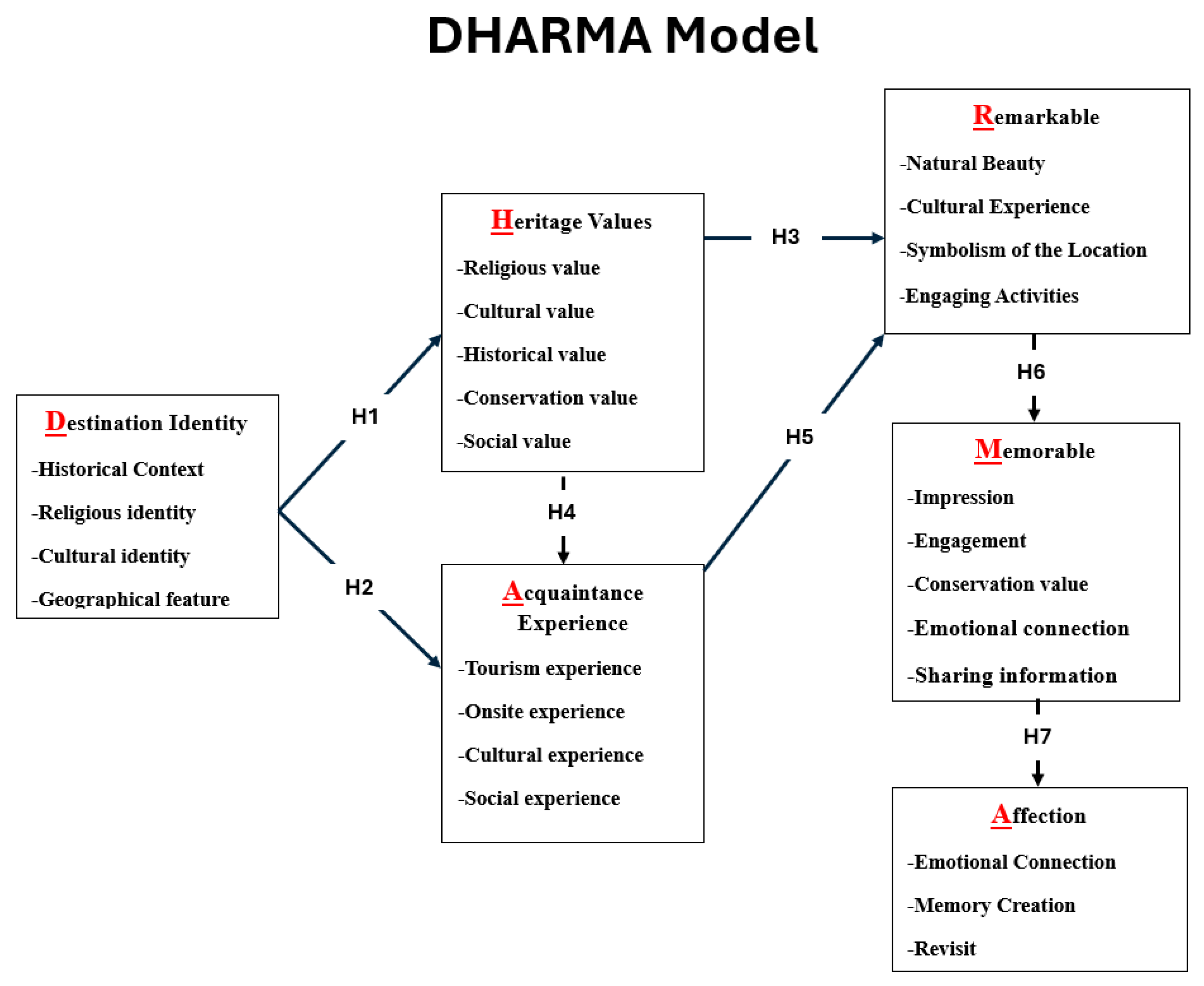


| Section | Construct/Question | Sample Question | Scale |
|---|---|---|---|
| Demographics | Gender | What is your gender? | Male/Female/Other |
| Age | What is your age group? | 18–24, 25–34, 35–44, 45–54, 55–65, >65 | |
| Education | What is your highest level of education? | High School, Bachelor’s, Postgraduate, Other | |
| Occupation | What is your occupation? | Professional, Self-employed, Student, Retired, Other | |
| Income | What is your annual income? | <$20,000, $20,000–$50,000, >$50,000 | |
| DHARMA Constructs | Destination Identity (5 questions) | Khao Chi Chan reflects Thailand’s Buddhist heritage. | 1–5 Likert |
| Heritage Values (5 questions) | The site’s royal connection enhances its cultural value. | 1–5 Likert | |
| Acquaintance Experience (5 questions) | The serene ambiance of Khao Chi Chan feels welcoming. | 1–5 Likert | |
| Remarkable Encounters (5 questions) | The Buddha image evokes a sense of awe. | 1–5 Likert | |
| Memorable Impressions (5 questions) | Visiting Khao Chi Chan leaves a lasting memory. | 1–5 Likert | |
| Affection (5 questions) | I feel a strong emotional connection to Khao Chi Chan. | 1–5 Likert | |
| Satisfaction | Overall Satisfaction (3 questions) | I am satisfied with my visit to Khao Chi Chan. | 1–5 Likert |
| Destination Identity | Heritage Values | Acquaintance Experience | Remarkable | Memorable | |||||||||||
|---|---|---|---|---|---|---|---|---|---|---|---|---|---|---|---|
| TE | DE | IE | TE | DE | IE | TE | DE | IE | TE | DE | IE | TE | DE | IE | |
| Heritage Values | 0.826 *** | 0.826 *** | - | - | - | - | - | - | - | - | - | - | - | - | - |
| Acquaintance Experience | 0.600 * | 0.223 * | 0.377 * | 0.457 * | 0.457 * | - | - | - | - | - | - | - | - | - | - |
| Remarkable | 0.708 ** | - | 0.708 ** | 0.665 * | 0.339 * | 0.326 * | 0.713 ** | 0.713 *** | - | - | - | - | - | - | - |
| Memorable | 0.552 ** | - | 0.552 ** | 0.519 ** | - | 0.519 ** | 0.556 ** | - | 0.556 ** | 0.780 *** | 0.780 *** | - | - | - | - |
| Affection | 0.442 * | - | 0.442 * | 0.415 * | - | 0.415 * | 0.445 * | - | 0.445 ** | 0.625 ** | - | 0.625 ** | 0.801 *** | 0.801 *** | - |
| Variable | Standardized Regression Weights () | SE | t | ||
|---|---|---|---|---|---|
| Des1 | 0.779 | - | - | 0.7860 | |
| Destination Identity AVE = 0.622 CR = 0.868 | Des2 | 0.727 | 0.052 | 17.656 *** | 0.7070 |
| Des3 | 0.763 | 0.058 | 18.723 *** | 0.7490 | |
| Des4 | 0.878 | 0.061 | 22.502 *** | 0.8570 | |
| Heritage Values AVE = 0.552 CR = 0.860 | Her1 | 0.769 | - | - | 0.5590 |
| Her2 | 0.823 | 0.041 | 24.621 *** | 0.6210 | |
| Her3 | 0.732 | 0.04 | 23.261 *** | 0.5050 | |
| Her4 | 0.685 | 0.036 | 28.309 *** | 0.4330 | |
| Her5 | 0.696 | 0.035 | 30.114 *** | 0.4460 | |
| Acquaintance Experience AVE = 0.649 CR = 0.879 | Acq1 | 0.765 | - | - | 0.6860 |
| Acq2 | 0.634 | 0.048 | 15.704 *** | 0.6070 | |
| Acq3 | 0.892 | 0.047 | 23.549 *** | 0.7190 | |
| Acq4 | 0.901 | 0.046 | 25.900 *** | 0.7570 | |
| Remarkable AVE = 0.742 CR = 0.920 | Rem1 | 0.794 | - | - | 0.7490 |
| Rem2 | 0.860 | 0.042 | 23.859 *** | 0.7840 | |
| Rem3 | 0.891 | 0.043 | 25.113 *** | 0.8090 | |
| Rem4 | 0.897 | 0.04 | 25.359 *** | 0.8120 | |
| Memorable AVE = 0.713 CR = 0.925 | Mem1 | 0.898 | - | - | 0.8130 |
| Mem2 | 0.802 | 0.079 | 9.029 *** | 0.7810 | |
| Mem3 | 0.778 | 0.095 | 11.590 *** | 0.7050 | |
| Mem4 | 0.858 | 0.087 | 13.882 *** | 0.7930 | |
| Mem5 | 0.881 | 0.087 | 13.319 *** | 0.8040 | |
| Affection AVE = 0.780 CR = 0.914 | Aff1 | 0.914 | - | - | 0.8690 |
| Aff2 | 0.855 | 0.034 | 17.520 *** | 0.8040 | |
| Aff3 | 0.879 | 0.034 | 19.173 *** | 0.8290 |
| Fit Statistic | Criterion | Obtained Value | Result |
|---|---|---|---|
| Less than 2.00 | 1.206 | Meets Criterion | |
| p-value | Greater than 0.05 | 0.056 | Meets Criterion |
| Goodness of Fit Index (GFI) | Greater than 0.95 | 0.965 | Meets Criterion |
| Adjusted Goodness of Fit Index (AGFI) | Greater than 0.95 | 0.960 | Meets Criterion |
| Comparative Fit Index (CFI) | Greater than 0.95 | 0.980 | Meets Criterion |
| Incremental Fit Index (IFI) | Greater than 0.95 | 0.982 | Meets Criterion |
| Normed Fit Index (NFI) | Greater than 0.95 | 0.958 | Meets Criterion |
| Root Mean Square Residual (RMR) | Less than 0.05 | 0.029 | Meets Criterion |
| Root Mean Square Error of Approximation (RMSEA) | Less than 0.05 | 0.042 | Meets Criterion |
| Hypothesis | Path Coefficient (b) | Conclusion |
|---|---|---|
| H1 | 0.826 *** | Significant at the 0.001 level |
| H2 | 0.223 * | Significant at the 0.05 level |
| H3 | 0.339 * | Significant at the 0.05 level |
| H4 | 0.457 * | Significant at the 0.05 level |
| H5 | 0.713 *** | Significant at the 0.001 level |
| H6 | 0.780 *** | Significant at the 0.001 level |
| H7 | 0.801 *** | Significant at the 0.001 level |
Disclaimer/Publisher’s Note: The statements, opinions and data contained in all publications are solely those of the individual author(s) and contributor(s) and not of MDPI and/or the editor(s). MDPI and/or the editor(s) disclaim responsibility for any injury to people or property resulting from any ideas, methods, instructions or products referred to in the content. |
© 2025 by the authors. Licensee MDPI, Basel, Switzerland. This article is an open access article distributed under the terms and conditions of the Creative Commons Attribution (CC BY) license (https://creativecommons.org/licenses/by/4.0/).
Share and Cite
White, P.; Phae-Ngam, W.; Kamoldilok, S.; Naemchanthara, K.; Limsuwan, P.; Suanpang, P. Laser-Carved Legacy: Exploring the Scientific Construction and Cultural Significance of the World’s Largest Golden Buddha in Thailand Through a Tourist Perspective. Tour. Hosp. 2025, 6, 201. https://doi.org/10.3390/tourhosp6040201
White P, Phae-Ngam W, Kamoldilok S, Naemchanthara K, Limsuwan P, Suanpang P. Laser-Carved Legacy: Exploring the Scientific Construction and Cultural Significance of the World’s Largest Golden Buddha in Thailand Through a Tourist Perspective. Tourism and Hospitality. 2025; 6(4):201. https://doi.org/10.3390/tourhosp6040201
Chicago/Turabian StyleWhite, Pattarinee, Wuttichai Phae-Ngam, Surachart Kamoldilok, Kittisakchai Naemchanthara, Pichet Limsuwan, and Pannee Suanpang. 2025. "Laser-Carved Legacy: Exploring the Scientific Construction and Cultural Significance of the World’s Largest Golden Buddha in Thailand Through a Tourist Perspective" Tourism and Hospitality 6, no. 4: 201. https://doi.org/10.3390/tourhosp6040201
APA StyleWhite, P., Phae-Ngam, W., Kamoldilok, S., Naemchanthara, K., Limsuwan, P., & Suanpang, P. (2025). Laser-Carved Legacy: Exploring the Scientific Construction and Cultural Significance of the World’s Largest Golden Buddha in Thailand Through a Tourist Perspective. Tourism and Hospitality, 6(4), 201. https://doi.org/10.3390/tourhosp6040201






